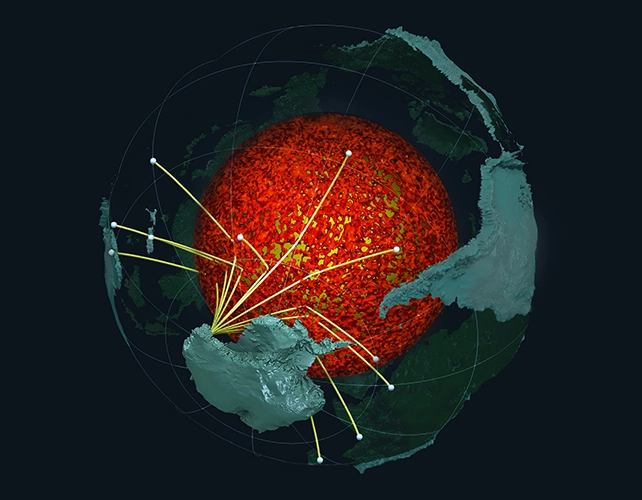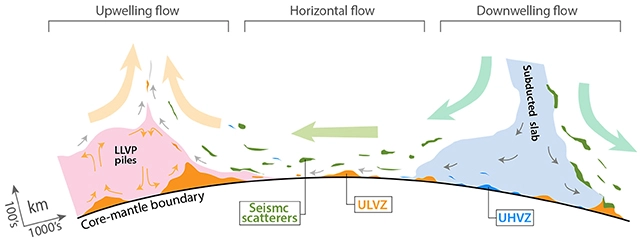An unforeseen and archaic structure seems to encase the Earth’s core.
By piecing together the most advanced and high-resolution map to date, scientists have uncovered a previously unknown ancient ocean floor situated approximately 2,900 kilometers (1,800 miles) beneath the Earth’s Southern Hemisphere. This layer, which is both slender and dense, appears to surround the core-mantle boundary (CMB), where the metallic outer core mixes with the rocky mantle above it.
Gaining a comprehensive understanding of what lies beneath us is crucial for studying diverse phenomena such as volcanic eruptions and the Earth’s magnetic field, which safeguards us from space-borne solar radiation.
According to Samantha Hansen, a geologist from the University of Alabama, seismic studies like the one we conducted, offer the most detailed images of the Earth’s interior structure, revealing a much more intricate composition than what was previously assumed.

Over the course of three years, Hansen and her team employed 15 seismic monitoring stations, which were buried in the ice of Antarctica, to produce a map of seismic waves from earthquakes. The movement and rebound of these waves can reveal the structure of the Earth’s interior. Regions with slower-moving sound waves are referred to as ultralow velocity zones (ULVZs). “Our high-definition imaging method analyzed thousands of seismic recordings from Antarctica and found thin, abnormal zones of material at the CMB wherever we probed,” explains Edward Garnero, a geophysicist from Arizona State University. “The thickness of the material ranges from a few kilometers to tens of kilometers, indicating that we may be observing mountains on the core, some of which could be as much as five times taller than Mount Everest.”
The researchers suggest that these ULVZs are probably oceanic crust that has been buried over millions of years. Even though the sunken crust isn’t close to recognized subduction zones on the surface where shifting tectonic plates push the rock down into the Earth’s interior, simulations reported in the study demonstrate how convection currents may have moved the ancient ocean floor to its present location.

Making assumptions about rock types and movement based on seismic wave movement can be challenging, and the researchers are keeping their options open. However, at present, the ocean floor hypothesis appears to be the most plausible explanation for these ULVZs. While it is difficult to say for certain, there is also a possibility that this ancient oceanic crust is encircling the entire core. Future seismic studies are expected to contribute more to the overall understanding of this phenomenon.
Geologists can benefit from this discovery by determining how heat from the denser and hotter core travels up into the mantle. The differences in composition between these two layers are more significant than the differences between the solid surface rock and the air above us in the atmosphere.
Hansen adds, “Our research establishes crucial links between the structure of the Earth’s shallow and deep layers and the mechanisms that govern our planet.”
The research has been published in Science Advances.
Do not forget to share your opinion with us to provide you with the best posts !




0 Comments